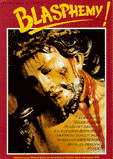
1988 – Slightly more than two years after releasing Hail Mary, Universal Studios launched The Last Temptation of Christ. This film portrayed the Sacred Person of Our Lord as a man unsure of his mission, a man full of fears and inhibitions, a common sinner who was tempted by Mary Magdalen and others. On the morning of the film’s premier in New York City, while members and friends of the American TFP demonstrated in front of the theater, our full-page advertisement was published in The New York Times protesting this outrage. The film’s director, Martin Scorcese, acknowledged in an interview with a Spanish newspaper that the protests against the film were causing people to view it with bias and that he was not achieving the goals he had set for it.
A Testimony from a Past Controversy
In 1988, Universal Studios launched The Last Temptation of Christ. Among other things, this film portrayed the Sacred Person of Our Lord as a man unsure of His mission, full of fears and inhibitions, and tempted carnally as a common sinner.
 Learn All About the Prophecies of Our Lady of Good Success About Our Times
Learn All About the Prophecies of Our Lady of Good Success About Our Times
At that time, The American TFP demonstrated in front of the theater where it debuted and published a full-page advertisement was in The New York Times protesting this outrage. The film’s director, Martin Scorcese, acknowledged in an interview with a Spanish newspaper Ya! (9-8-88) that the protests and controversy surrounding the film were effective in changing people’s perception of it.
“I believe that my film reflected the Divine nature of Jesus (sic!) and at no moment did it offend the religious sentiments of any viewer. However the problem is that after so much controversy, the public went to see my film already conditioned and convinced that it was sacrilegious and blasphemous. If the public debate around it had not occurred and the press had not given it so much attention, the public would have seen the film with other eyes…”

